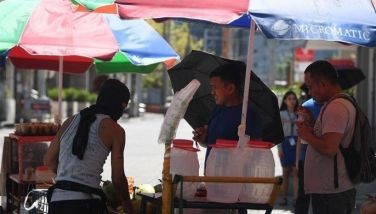NCR cases slightly up; Cebu surge slows down

MANILA, Philippines — There was a slight uptrend in new COVID-19 cases in Metro Manila and a slowdown in the surge in Cebu City over the past week, the OCTA Research group said.
In its monitoring report released yesterday, OCTA said the average number of new daily cases in Metro Manila from Feb. 13 to 19 was 430, up from the average of 370 new cases per day in the preceding week.
“A closer examination showed that some local government units (LGUs) in the National Capital Region (NCR) had a spike in new COVID-19 cases,” read the report.
Among the cities that recorded an increase in the past week was Pasay City, which has been placed in the high-risk category after it nearly doubled its average new daily cases from 23 to 44.
OCTA said Malabon and Navotas also had a spike in new COVID-19 cases, while Manila and Marikina had slight increases.
The group earlier cautioned the government over proposals to relax quarantine restrictions in Metro Manila, saying the region is still not qualified to be placed under modified general community quarantine (MGCQ).
OCTA said the surge in Cebu City slightly slowed down, recording an average of 192 new cases per day in the past week, down from 202 in the report released on Thursday.
The group, however, said the city still has a high positivity rate of 15 percent, indicating more people testing positive out of the total tests conducted in the area.
Its hospital occupancy slightly increased to 52 percent, which is still below the critical level of 70 percent.
The nearby cities of Lapu Lapu, Mandaue and Talisay were also moved to high risk classification due to continued increase in cases and high positivity rate.
“The upward trends in some LGUs in NCR and Cebu indicate that the pandemic is not yet under control, as the Department of Health (DOH) undertakes to conduct more bio-surveillance testing in areas of concern,” said OCTA.
The group has repeatedly urged the government to intensify sequencing of samples to determine the prevalence of different variants of COVID-19, including the more infectious B117 or the United Kingdom variant of the novel coronavirus.
5-month high
Meanwhile, the DOH reported yesterday 239 new deaths from COVID-19, the highest in five months.
Based on the DOH’s Case Bulletin, the death toll from COVID-19 rose to 12,680 as 239 individuals have succumbed to the virus as of Feb. 20. Data showed that on Sept. 14 last year, the DOH documented 259 deaths.
The latest bulletin showed that 504 patients have recovered, bringing the total number of recoveries to 513,120.
The DOH said there were 2,240 new cases of COVID-19, raising the total to 559,288 cases. The number of active cases was at 34,100. The bulletin stated that overall, 94.9 percent of cases are mild and asymptomatic.
Of the active cases, 86.7 percent are mild, 8.2 percent asymptomatic, 2.3 percent critical and 2.2 percent severe. “Moderate” cases make up 0.68 percent.
Despite the latest figures, DOH Undersecretary Maria Rosario Vergeire said shifting to MGCQ is “the direction of the government.”
“We have been on very strict lockdown for almost a year now and we have to look at the other side of the fence also and that is our economy,” she added.
Vergeire underscored that having a poor economy also has “health consequences,” hence the need to have a balance.
“Our safeguard when we reach the point when we will shift to the lower level of community quarantine measures is our local government units (LGUs)… when they have their own response,” she said.
Vergeire added there are “gatekeeping indicators” that LGUs must have so that they can manage COVID-19 cases.
“We are asking LGUs to step up to make sure that even if we ease the restrictions in various sectors, our cases will not increase,” she pointed out.
These indicators include having better surveillance, adequate quarantine facilities and efficient screening at the borders, among others. – Sheila Crisostomo
- Latest
- Trending






























